| The Very Highest Quality Farthings... |
| The Story of the Farthing |
|

|
|
|
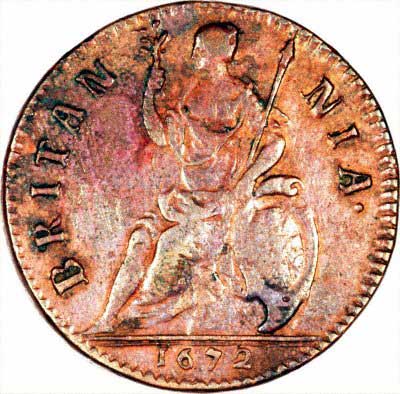
|
|
|
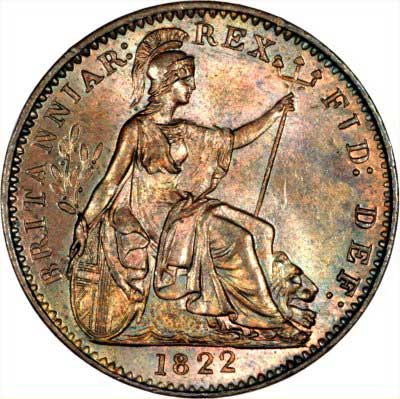
|
|
|
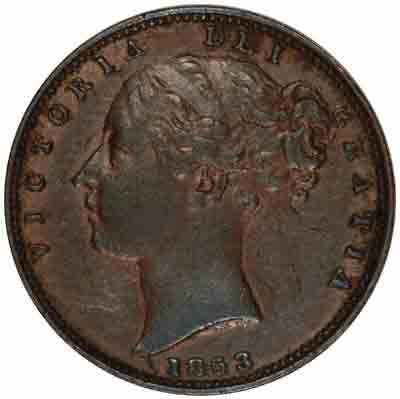 |
|
|
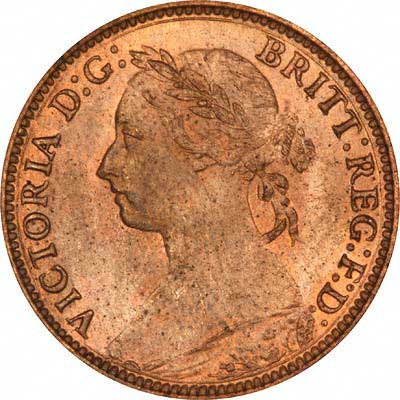 |
|
|
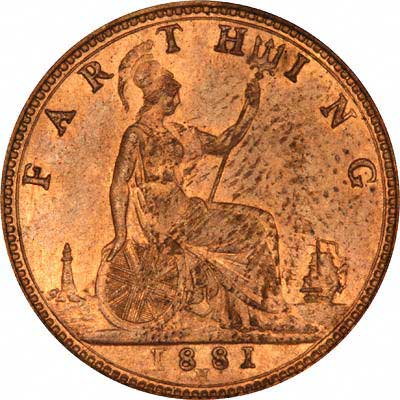 |
|
|

|
|
|
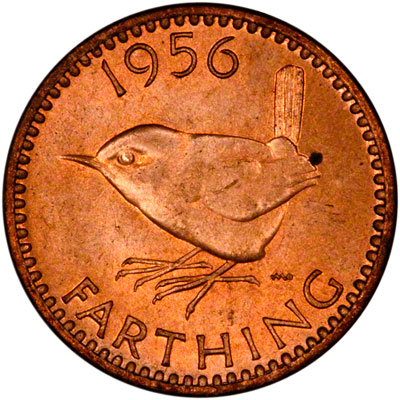
|
|
|
"Fourthing"
The only commonly produced coin for many years was the silver penny.
Before 1279, if change smaller than a penny was needed, it had become common to divide a silver penny into two halves, or four quarters. This could have been called halving and fourthing. It certainly appears that the name farthing is derived from fourthing or feorling.
The First Farthing
Although a round halfpenny had been issued as early as 886 for Alfred the Great, and they continued to be produced under most monarchs, they were never issued in large quantities. The cross on the reverse of most pennies, helped to make it easier to cut pennies for change.
The first round farthing was issued from 1279 under Edward I, it was made of silver. During his reign, a new denomination, the groat was also issued for the first time. Farthings continued to be produced in small quantities for most monarchs up to Edward VI in about 1553, when the last silver farthing was produced.
Production Suspended
During the reigns of Mary, without and with Philip, no farthings were produced.
One of the reasons that small denomination coins such as halfpence and farthings, were only issued in small quantities was cost. The production cost for small coins is almost as great as for large coins. The monarch was always reluctant to make a loss on minting activity, preferring understandably to make a profit.
Under Elizabeth I, silver three-farthings were issued. This solved the problem of minting the inconveniently small silver farthing, a threefarthing coin could be given in change if a penny were tendered.
The three-farthings bore a rose behind Elizabeth's portrait, as did sixpences, threepences, and threehalfpences. This was to distinguish them from shillings, groats, halfgroats and pennies.
The First British Copper Coin
Under James I, copper farthings were produced. At first these were produced privately under licence from the Crown, first by Lord Harrington, then by Lennox.
The licence changed hands several times, and privately issued copper farthings continued to be produced under Charles I.
After Charles I got the chop, a copper farthing was issued by Oliver Cromwell, bearing his portrait.
Regal Copper for Charles II
From 1672, a good quality regal copper coinage of farthings and halfpennies was produced for Charles II. These featured Britannia as a reverse design. The first time Britannia had been used on British coins. Previously Britannia had only appeared on Roman coins alluding to Britain.
You may wish to visit our Britannia on British Coins page for further information.
Tin Coinage
Still under Charles II, tin farthings were produced in 1684 and 1685, to help the Cornish tin industry. These were made with a small plug of copper, and using a design similar to the copper issue, except that the date appears on the edge of the coin, which also carries the inscription NUMMORUM FAMULUS.
Tin Continued
Tin continued to be used for farthings under James II, when tin halfpennies were also produced, and also under William and Mary until 1692.
Return to Copper
A copper farthing was once again issued in 1694 under William and Mary. Farthings continued to be produced in copper until 1860.
The Famous Queen Anne Farthing
No copper coins were produced during Anne's reign, 1702 to 1714, except for farthings during the last year 1714. For some reason, public awareness focussed on the scarcity of Queen Anne farthings in a similar manner to the recent "necklace £2" rumour. Although Anne farthings are scarce, they were never as rare as imagined by popular opinion at the time, although much was written about them.
Soho Mint
Matthew Boulton produced "cartwheel" twopences and pennies in 1797, at the Soho mint in Birmingham, and large heavy farthings from 1799. Boulton and Watt could produce low value coins, with a high intrinsic metal content, profitably because of their adoption of steam powered machinery.
From Copper to Bronze
From 1860, farthings, along with pennies and halfpennies, were reduced in size and produced in bronze, which is more hard-wearing. This change would have been facilitated by the availability of higher quality and harder-wearing steel dies. During all this time, Britannia continued to be the only design used on the reverse of farthings, and this continued until the last issues of George V in 1936.
The Wren Replaces Britannia
From the first farthings of George VI in 1937 to the very last farthing of 1956 during the reign of Elizabeth II, the wren, often incorrectly believed to be Britain's smallest bird, continued to be used on the farthing, often incorrectly believed to be Britain's smallest and lowest valued coin. Actually the wren is not Britain's smallest bird as the goldcrest and firecrest are both smaller, but then again, half, third and quarter farthings were all smaller than farthings. When the wren farthing was introduced, popular knowledge of birds was less developed than now, so the error was fairly understandable.
Britannia continued to be used on the halfpenny.
The Last Farthing
The very last date of farthing to be issued was 1956, and the farthing was demonetised shortly after, at the end of 1960.
Farthings had survived for over 677 years. They had been a popular coin, and are still fondly remembered by many.
Farthings were often used in "just under" pricing such as £4.19.1134d., or 4s.1134d., instead of £5 or 5 shillings respectively.
Even Smaller Than Farthings - Half Farthings
Although there were 960 farthings to the pound sterling, which sounds difficult to imagine nowadays, there were, in fact coins smaller than farthings.
Fractional farthings were issued from 1839. Copper half farthings, 1920 to the pound, were used in Britain, and also in many Colonial countries where lower denomination coins were needed.
They were issued from 1839 to 1856, and their reverse design was the inscription "HALF FARTHING" in two lines, with a crown above.
If most people are fascinated to learn that half farthings were ever produced, they would be even more surprised to discover that there were also quarter and third farthings!
Quarter Farthings
Copper quarter farthings, incredible as it may seem to have needed coins worth 3840 to the pound, were produced from 1839 to 1853, but were almost exclusively reserved for use in Ceylon.
The design of quarter farthings followed that of half farthings, in having as their reverse type, their value in two lines surmounted by a crown.
Third Farthings
There were 2880 third farthings to the pound, and third farthings were issued for use in Malta. They were produced in copper in 1844 with the reverse type being Britannia, and in bronze from 1866 to 1885 with the reverse design being the inscription "ONE THIRD FARTHING" in two lines, within a wreath, and surmounted by a crown.
Incredibly, third farthings continued into the twentieth century, being issued for Edward VII in 1902, and for George V in 1913, with the same reverse of their value in two lines.
If you want to find the value of a coin you own, please take a look at our page I've Found An Old Coin, What's It Worth?
If you have an enquiry about any of our Farthings, we'd be happy to answer you, but please note it may be quicker to telephone us. Please see the Contact Us page of our website.
| ...at the Lowest Possible Price |
|
32 - 36 Harrowside, Blackpool, Lancashire, FY4 1RJ, England. Telephone (44) - (0) 1253 - 343081 ; Fax 408058; E-mail: The URL for our main page is: https://24carat.co.uk | Chard(1964) Ltd |